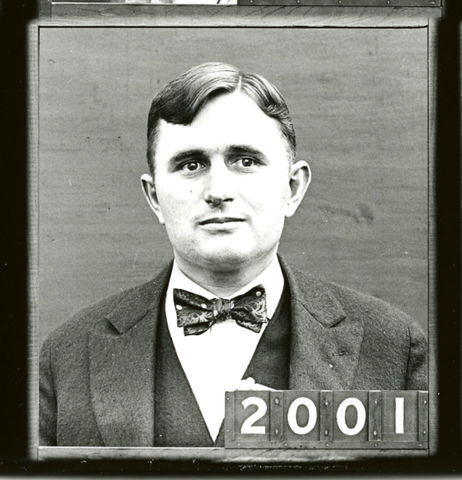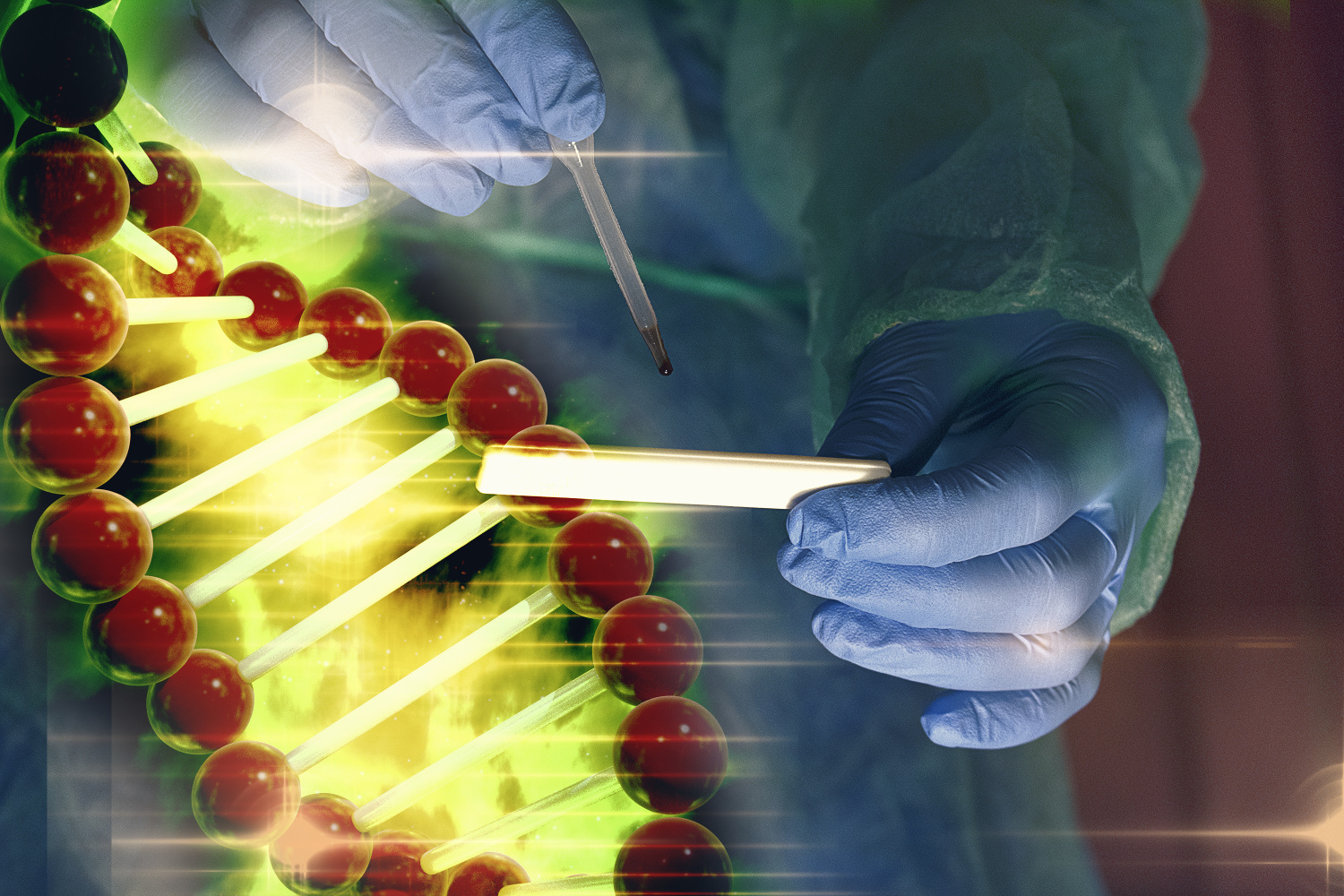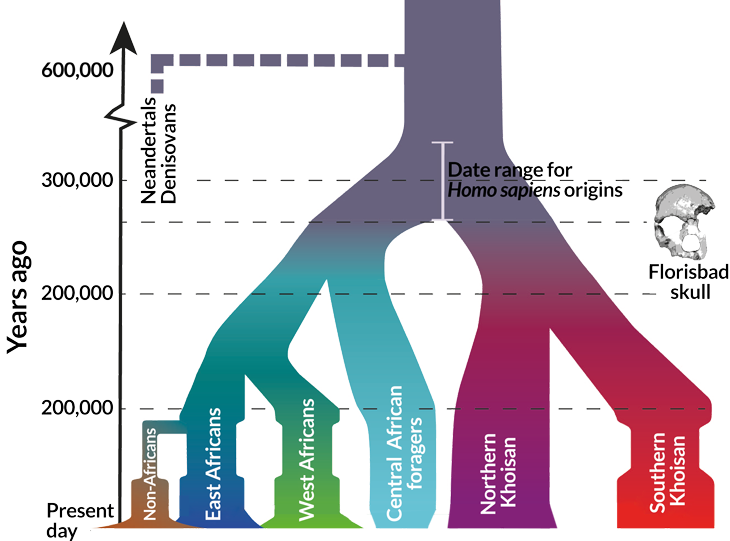 Forensic science makes the news on a nearly daily basis, whether it’s a gruesome murder trial, a paternity dispute, or a paleontologist working on a newly-discovered fossil. The fact is that the world is fascinated by all things forensic… and new techniques are being invented all the time.
Forensic science makes the news on a nearly daily basis, whether it’s a gruesome murder trial, a paternity dispute, or a paleontologist working on a newly-discovered fossil. The fact is that the world is fascinated by all things forensic… and new techniques are being invented all the time.
We’ve compiled a sampling of interesting articles below on the topic of forensic science. If you read something in the news that strikes your forensic fancy, share it with us in the “Comments” section below. Happy reading!
Futuristic CSI gloves
According to this LiveScience report, a team of biological engineering researchers at MIT are testing “glowing living gloves” filled with genetically-modified bacteria. These gloves could one day replace the CSI-style black lights currently used to detect the presence of certain substances.
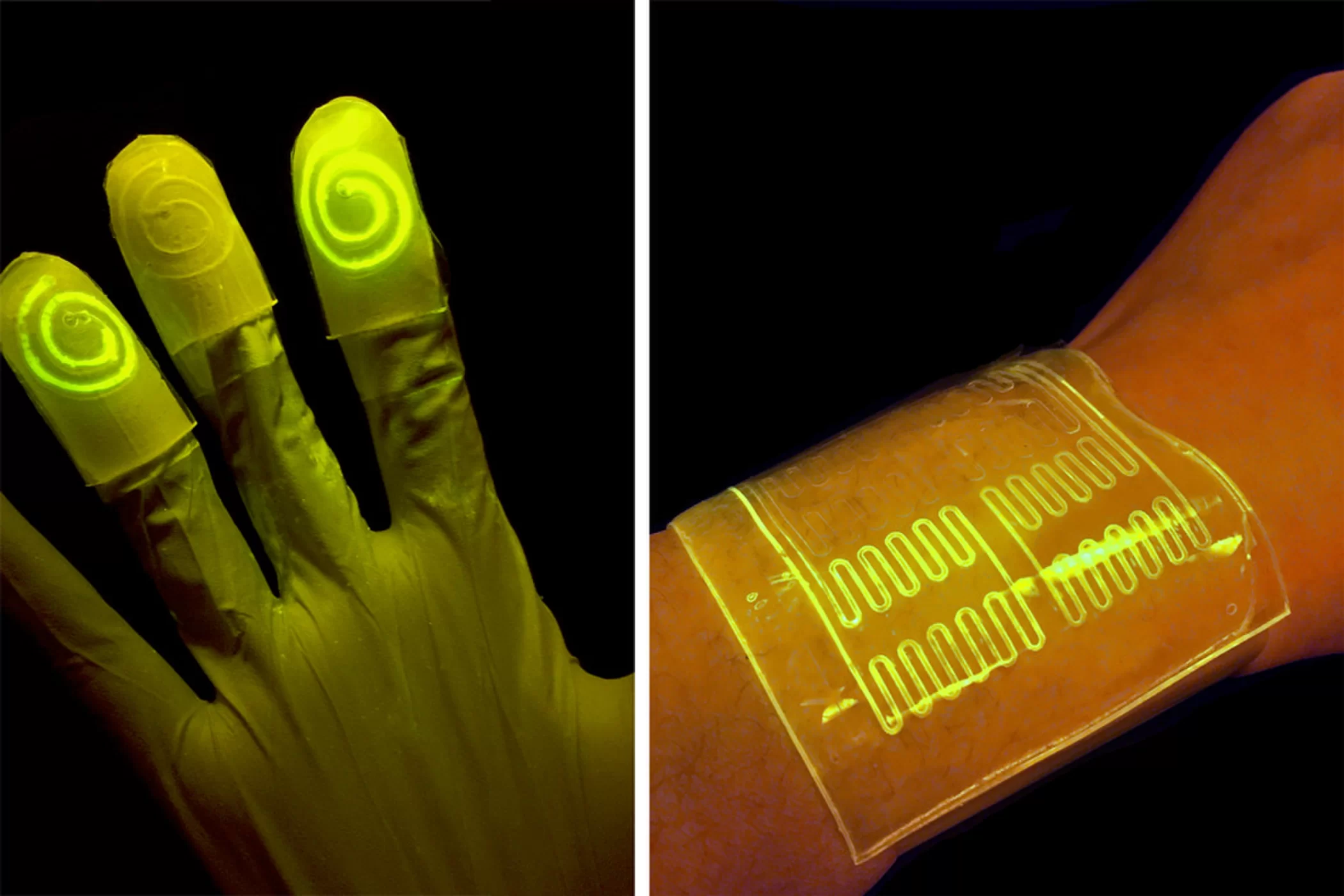
The “living material” is made of a hydrogel filled with programmed bacteria that light up in reaction to certain chemicals. Photo credit: Researchers/MIT
New cutting-edge forensic techniques
We highly suggest this student-friendly article from Science News. Cool Jobs: New Tools to Solve Crimes looks at three new cutting edge crime-solving tools being developed by a microbiologist, a chemist, and a microbial ecologist working at universities around the United States.

A high school student acts as an investigator in a staged burglary. Here, she swabs the kitchen counter to collect a sample. Back at the lab, researchers will analyze the microbial DNA in the sample. Photo credit: Kat Gilbert for Science News
A forensic… phone?
Think about it: every day, you leave more than just fingerprints on your phone. You leave your DNA, and dozens (if not hundreds) of different chemical clues about what you ate for lunch, which soap you used to wash your hands, whether you’re wearing sunscreen, and much more. Fingers Leave Tell-Tale Clues about You on Your Phone is a great article to share with your students.
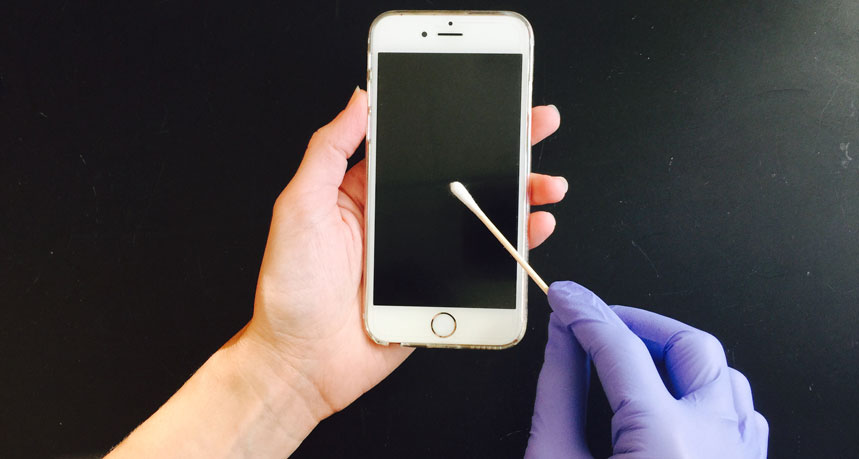
Chemical traces on a cell phone allow researchers to construct lifestyle sketches of its owner. Photo credit: Amina Bouslimani, Neha Garg, UCSD
A teen studies how to get away with murder
Blood frequently offers many clues about how a crime was committed. Even when a murderer tries to clean up a crime scene, traces of blood can still tell the tale. This Science News for Students article, The Science of Getting Away with Murder, tells the story of a 16-year-old high school sophomore who tested different cleaners to see which one might truly erase evidence of a crime. Talk about a great science fair project!
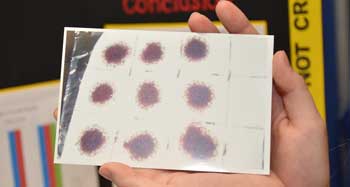
Brynn Myers, 16, shows off a photo of blood-stained cloths from her forensics project. Photo credit: L. Buitrago
Detective X, an early forensic science expert
Have you ever heard of Wilmer Souder? He worked as a physicist at the National Bureau of Standards—now known as the National Institute of Standards and Technology (NIST). He played an important role in the early days of forensic science. For more than 30 years, his work helped send countless murderers, bootleggers, gangsters, and thieves to prison—including the man convicted of kidnapping Charles Lindbergh’s baby. Yet Souder kept such a low profile (partly out of concern for his family’s safety) that he is far from a household name. If you love history and forensics, you’ll enjoy reading Who Was Detective X?
A contest to create the fastest, most accurate fingerprint-taking device
In April 2017, the Intelligence Advanced Research Projects Activity (IARPA) launched a fascinating challenge. They invited security companies and research groups to build a device that accurately captures every part of a fingerprint. A bigger print gives police officers a better chance of matching a partial print found at a crime scene, among other things. This New Scientist article recaps the details of this $100,000 contest. 
From the front pages of the New York Times
In September 2017, the New York Times reported that two of the city’s DNA analysis methods—high-sensitivity testing and the Forensic Statistical Tool, or FST—are under the microscope. Scientists question the validity of these methods. This is a fascinating topic, because flawed DNA evidence means that thousands of criminal cases could go to retrial. Take the time to read “Traces of Crime: How New York’s DNA Techniques Became Tainted.”
Forensic science and human evolution
Forensic science doesn’t just help us solve murders… it helps us learn about our anthropological past! A new comparison of ancient and modern human DNA concludes that Homo sapiens emerged earlier than typically thought, perhaps around 350,000 years ago. Ancient Boy’s DNA Pushes Back the Date of the Earliest Humans takes a look at yet another way that forensic science can be used.
In the diagram below, based on a new DNA study, Homo sapiens originates as a genetically distinct species between 350,000 and 260,000 years ago. African populations branched in two directions and then further divided around 200,000 years ago. Non-African populations, bottom left, appeared shortly after 100,000 years ago.
Misconceptions about forensic science
We’ve all seen at least one scene on a crime show where forensic scientists line two images up on a computer screen, showing an exact match. But this isn’t how it works in real life. In October 2017, comedian John Oliver discussed this not-so-funny topic on his show. ScienceAlert covered his remarks here: John Oliver Just Nailed the Huge Issue with Forensic Science.
If you’re interested in more CSI-themed science, visit our Who Did It? section. You may also want to review our Forensic Science Newsletter. Furthermore, if you’re interesting in knowing which forensic science products are favorites among our customers, click here!


